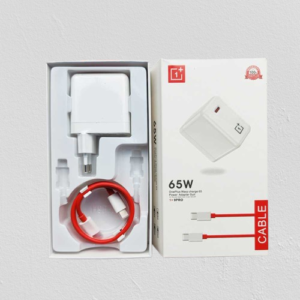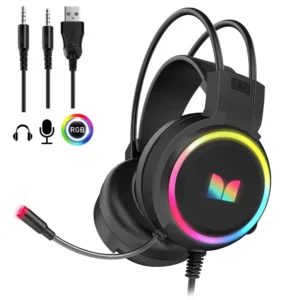Description
Microphone: Your Gateway to Crystal-Clear Sound
Follow on Facebook Click Here
he Ultimate Guide to Microphones: Types, Features, and Uses
Micro phone are one of the most essential tools in modern technology, playing a vital role in communication, entertainment, and recording. Whether you’re a content creator, musician, podcaster, or professional, understanding the different types and features of microphones can help you make the right choice for your needs. This comprehensive guide will take you through the world of microphones, highlighting their types, uses, and how to choose the best one for your purposes.
What is a Microphone?
A micro phone is an electrical device that converts sound into an electrical signal. It captures sound waves produced by your voice or other sounds and translates them into audio that can be amplified, recorded, or transmitted. Micro phones are used in a wide variety of applications, from live performances and studio recordings to podcasts and video calls. They come in different shapes, sizes, and designs, each suited for specific tasks.
Types of Microphones
1. Dynamic Microphones
Dynamic micro phones are known for their durability and versatility. They are designed with a moving coil that responds to sound vibrations, making them ideal for high-pressure sound levels. These microphones are commonly used in live sound environments and are great for applications where durability and reliability are crucial, such as in concerts and public speaking events. Dynamic microphones are also relatively affordable, making them a popular choice for beginners.
2. Condenser Microphones
Condenser micro phones are highly sensitive and provide a more accurate, detailed sound capture. These micro0phones use a diaphragm and a backplate to capture sound vibrations, and they require a power source, usually phantom power, to operate. Condenser microphones are ideal for studio recordings, voice-over work, and any situation where capturing a rich, detailed sound is important. They are often used for recording vocals, acoustic instruments, and podcasts.
3. Ribbon Microphones
Ribbon micro phones use a thin metal ribbon to capture sound, making them highly sensitive and capable of producing a smooth, natural sound. They are often favored by audiophiles and professional sound engineers due to their warm, vintage sound quality. However, ribbon micrrophones are more delicate and sensitive to high volumes, so they may not be suitable for all environments. They are typically used in controlled studio settings for recording vocals, strings, and other delicate instruments.
4. Lavalier Microphones
Lavalier microphones, also known as lapel miicrophones, are small clip-on microphones commonly used in television, film, and video production. These microphones are designed to be discreet and can be attached to clothing, making them ideal for hands-free use. Lavalier micro phones are often used by presenters, public speakers, and interviewers to capture clear audio without the need for holding a micro phone.
5. Shotgun Microphones
Shotgun micropphones have a highly directional pickup pattern, meaning they can focus on sound from a specific direction while rejecting noise from the sides and rear. These micro phones are commonly used in film and television production, sports commentary, and other situations where capturing sound from a distance is necessary. Shotgun microphones are often mounted on cameras or used on boom poles to capture high-quality audio from a distance.
Features to Consider When Choosing a Microphone
When selecting a micro phon, there are several important features to consider to ensure you choose the right one for your needs:
Frequency Response
The frequency response of a micro phone refers to the range of sound frequencies it can capture. A wide frequency response allows the micro phone to capture both low and high sounds with clarity. For most applications, a microphon with a frequency range of 20 Hz to 20 kHz (the human hearing range) is ideal.
Polar Pattern
The polar pattern determines how a microphone picks up sound from different directions. Common polar patterns include:
- Cardioid: Captures sound primarily from the front and rejects sound from the sides and rear. Ideal for vocals and solo instruments.
- Omnidirectional: Captures sound equally from all directions. Great for recording groups or environments where you want to capture ambient sound.
- Bidirectional (Figure-8): Captures sound from the front and rear while rejecting sound from the sides. Useful for interviews or capturing sound from two sources.
- Supercardioid and Hypercardioid: These patterns offer more directionality than the standard cardioid pattern, ideal for isolating sound in noisy environments.
Sensitivity and Gain
Sensitivity refers to how well a micro phone can pick up quiet sounds, while gain controls adjust the microphone’s output level. Highly sensitive micro phones are ideal for capturing subtle details in recordings, but they may also pick up unwanted noise in a noisy environment. It’s important to choose a microphone with the right balance of sensitivity and gain for your application.
How to Choose the Best Microphon for Your Needs
When selecting a micro phone, it’s crucial to consider your specific needs. Here are some general guidelines based on common use cases:
- For podcasting and voice-over work: A condenser micro phone with a cardioid pattern is a popular choice due to its clarity and ability to isolate the voice from background noise.
- For live performances: Dynamic micro phones are often preferred for their durability and ability to handle high sound pressure levels.
- For recording music in the studio: Condenser or ribbon microphon are ideal for capturing the full range of sounds, including vocals and acoustic instruments.
- For video production: Lavalier or shotgun micrphones are commonly used for capturing clear audio in on-the-go environments or when shooting from a distance.
Conclusion
Microphon are essential tools for capturing and transmitting sound, with a wide variety of types and features to suit different needs. By understanding the different types of microphones and their unique characteristics, you can make an informed decision when selecting the right microphone for your applications. Whether you’re recording music, hosting a podcast, or performing live, choosing the right micro phone will ensure high-quality audio that enhances your work and creates a professional sound.
Investing in a quality micro phone tailored to your needs will not only improve your audio experience but also elevate the overall quality of your content. Choose wisely and make the most out of your micro phone!















Reviews
There are no reviews yet.